1 ASSESSINGSKILLS: LISTENING: purposes andtechniques
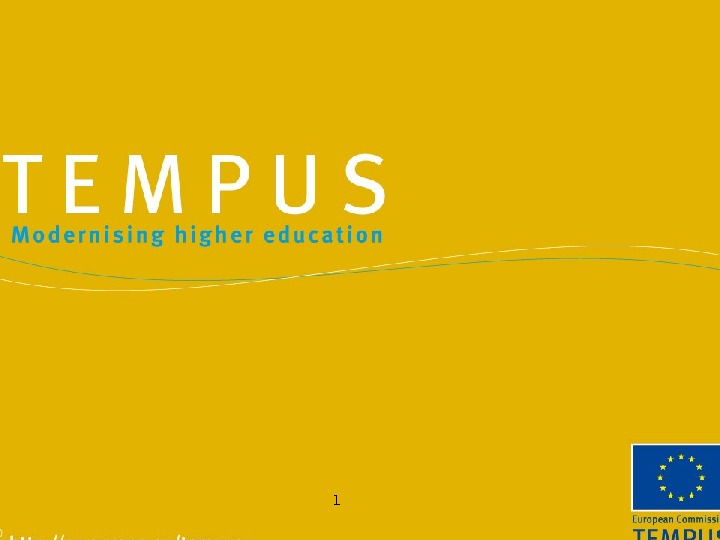
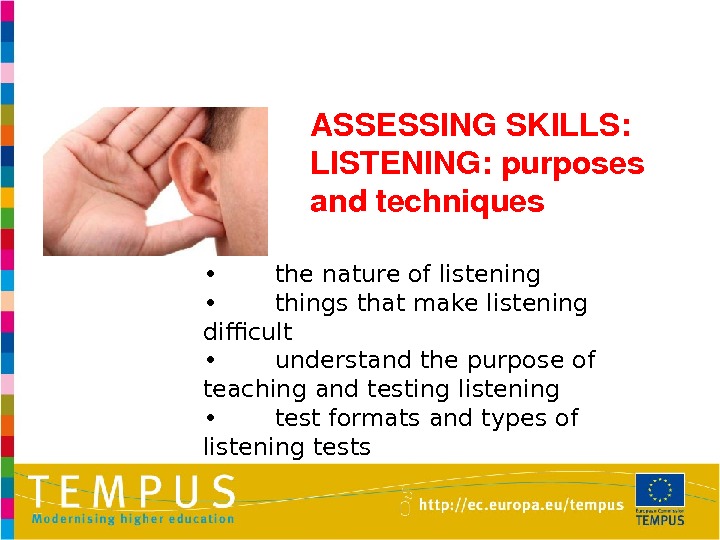
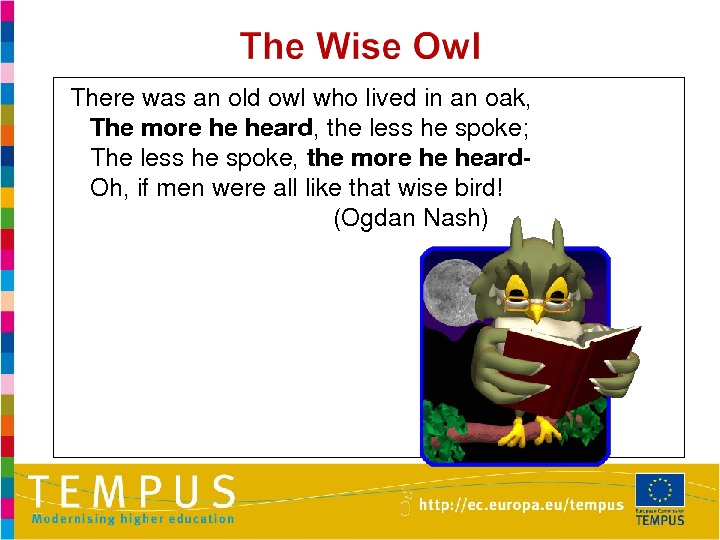
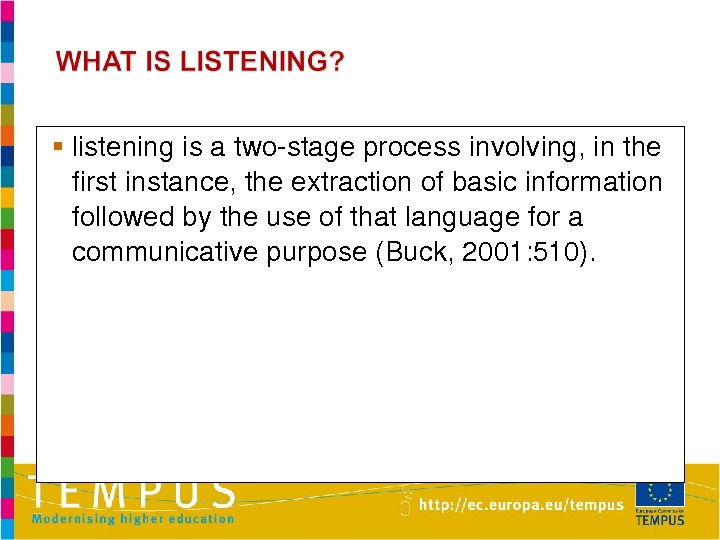
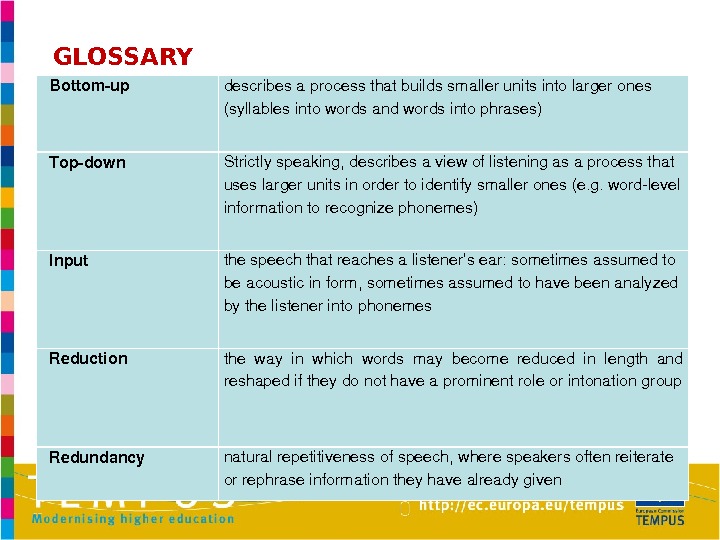
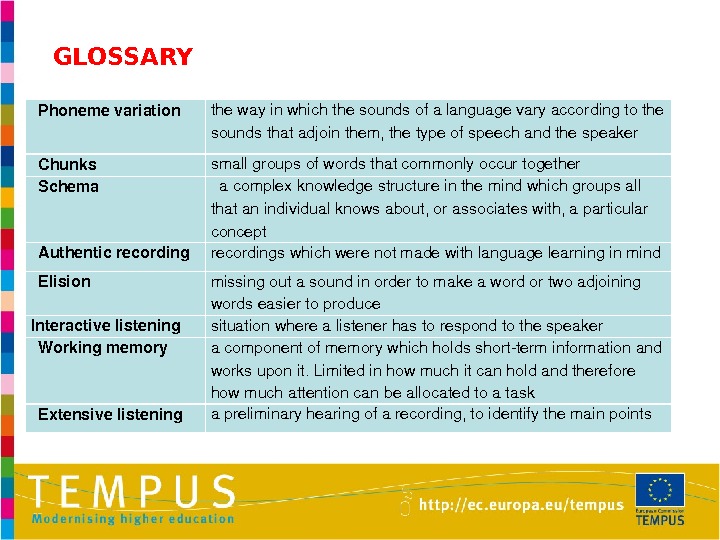
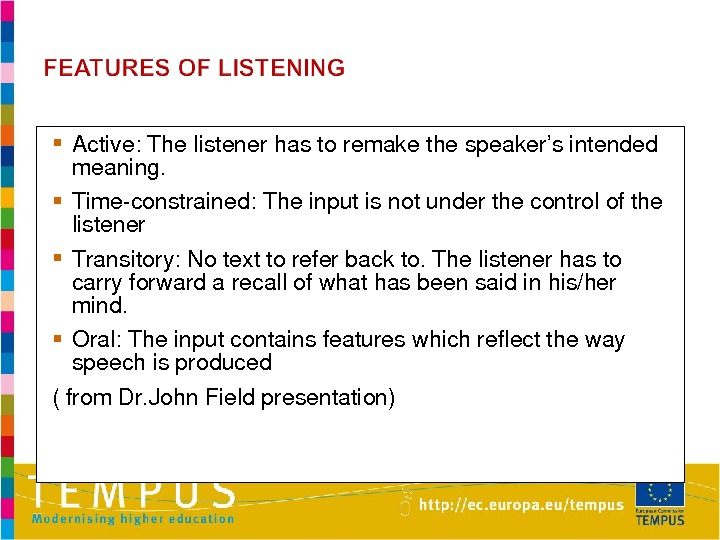
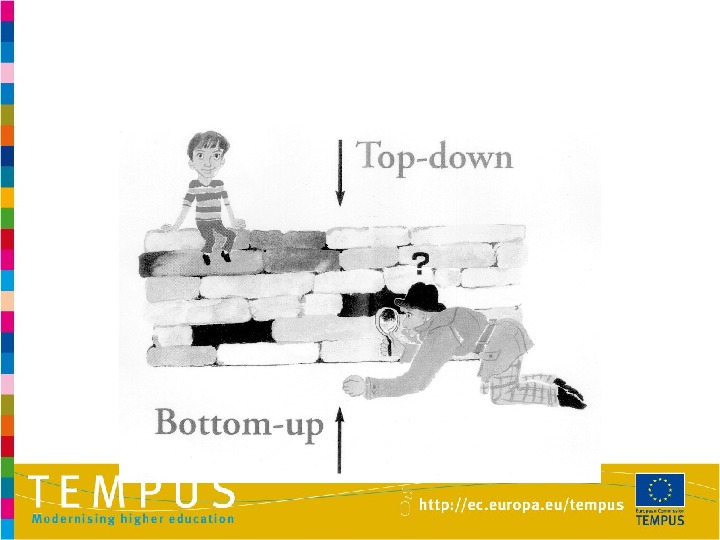

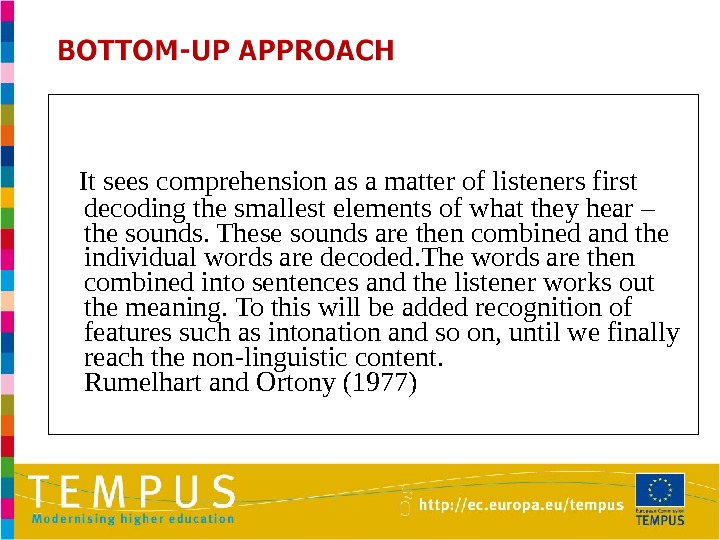
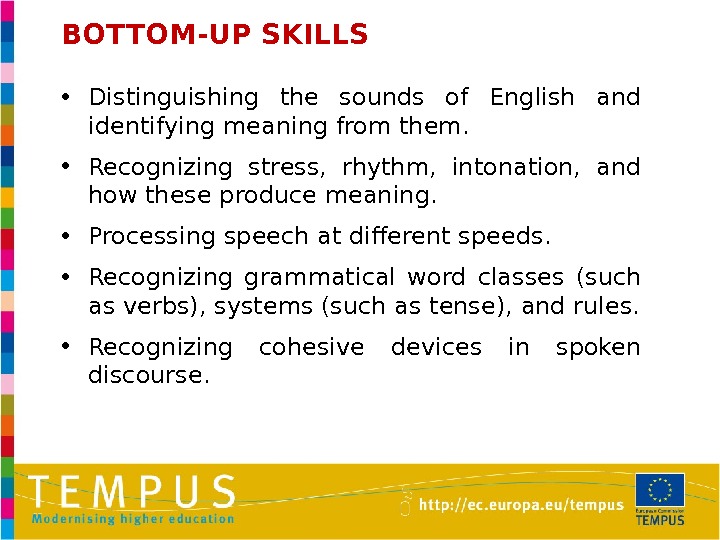
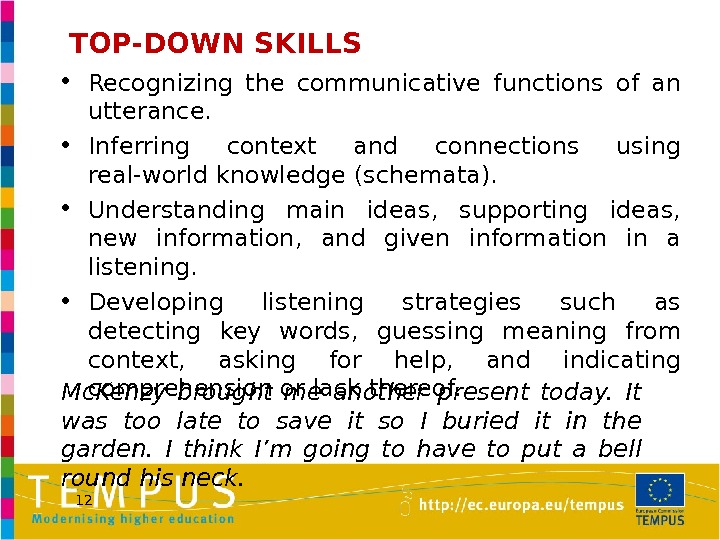
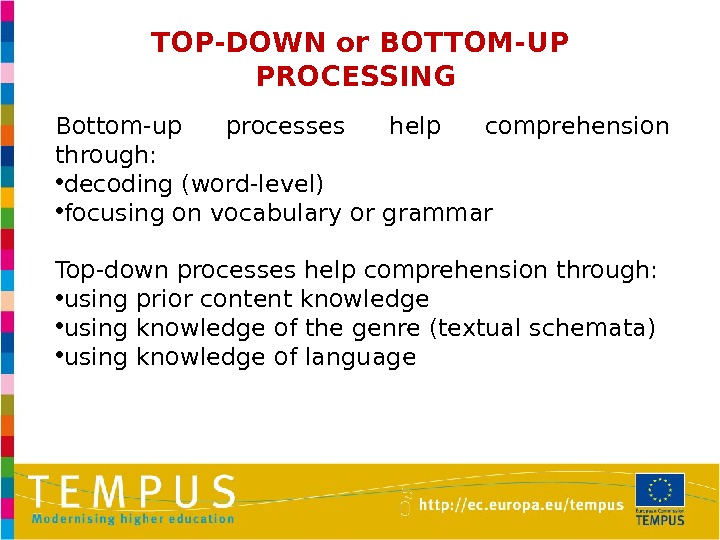
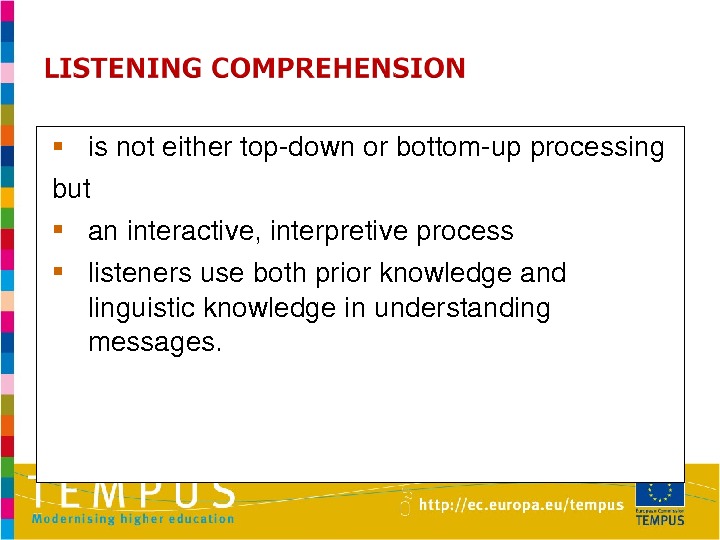
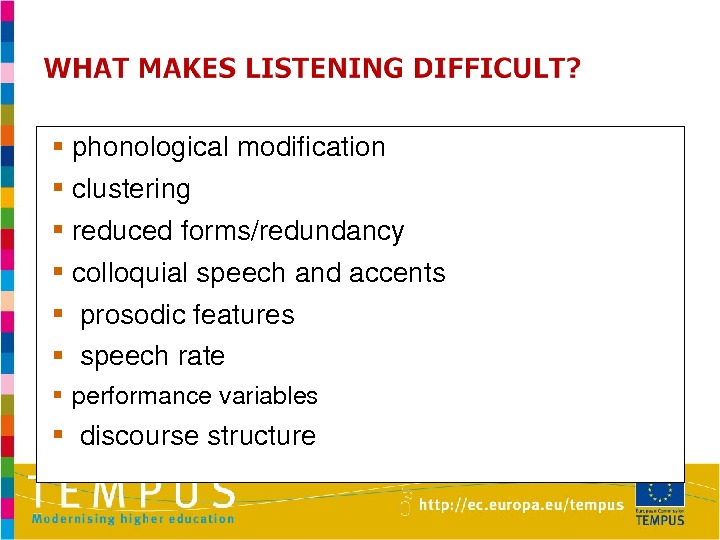
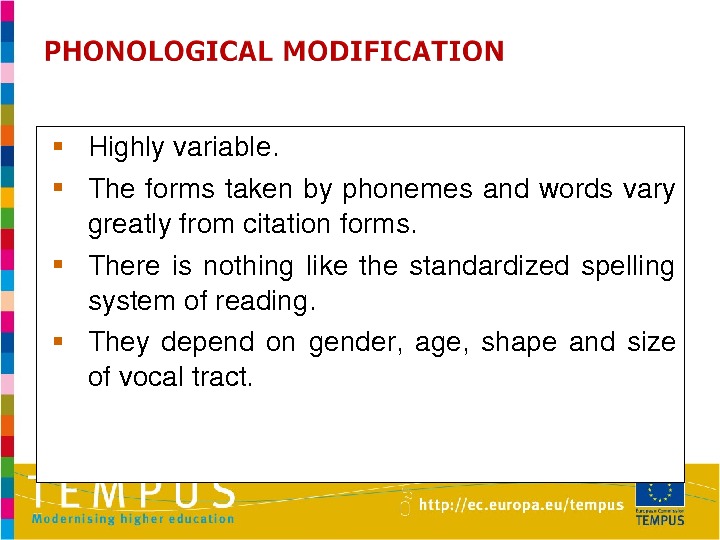
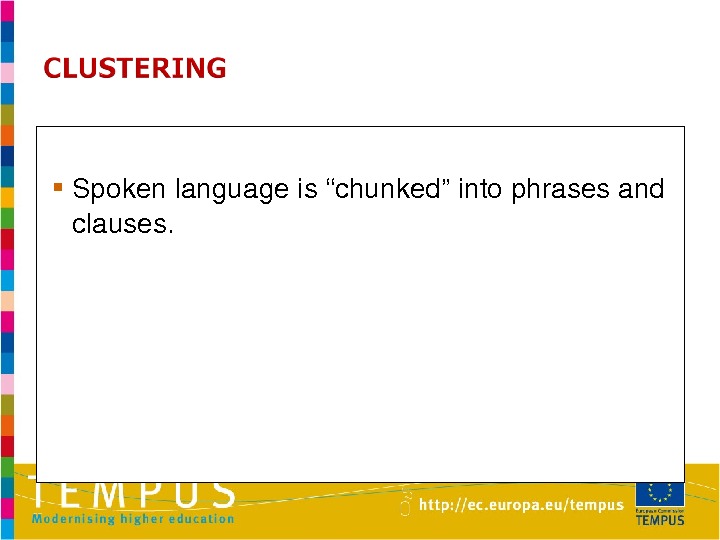
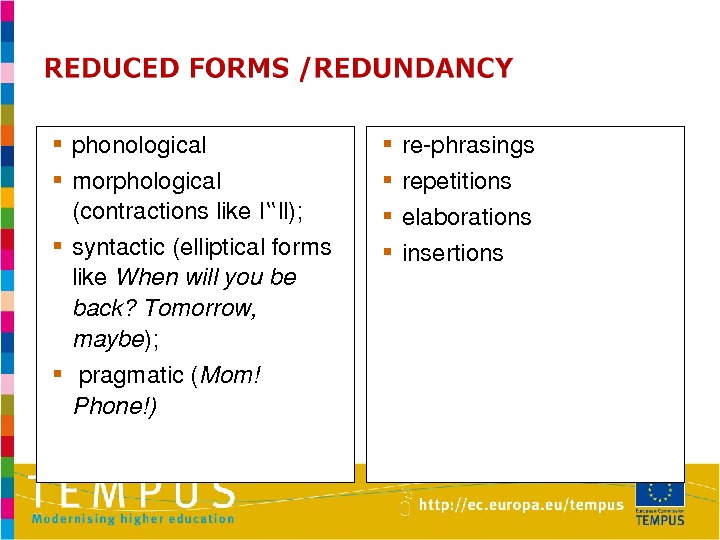
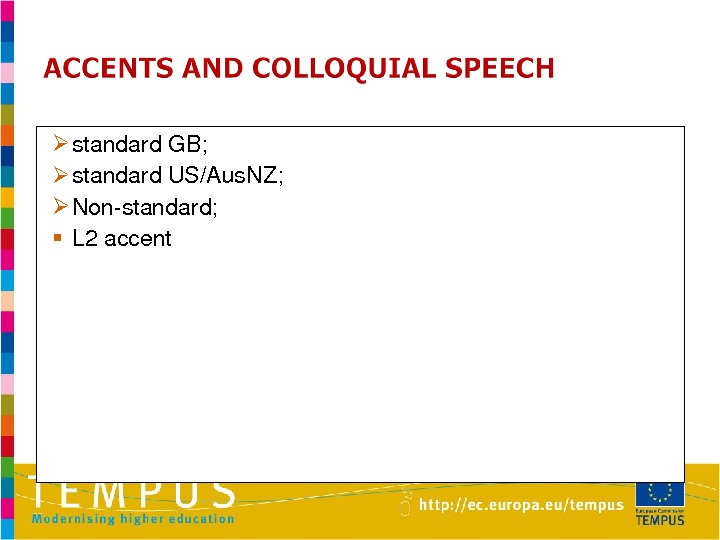

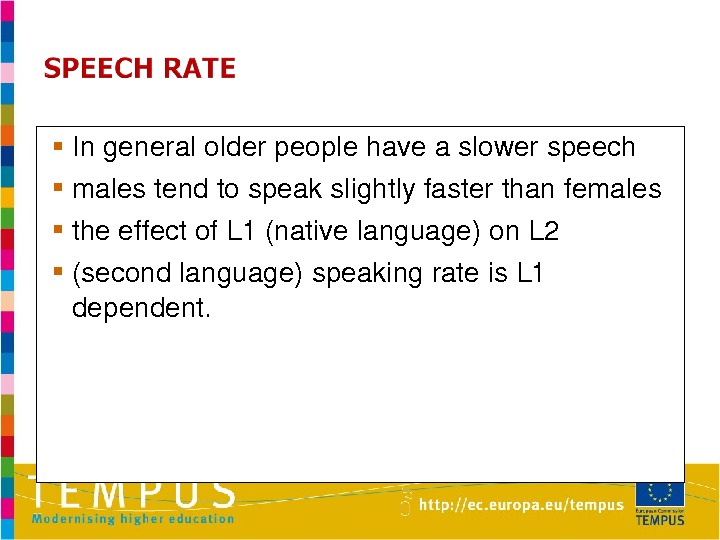
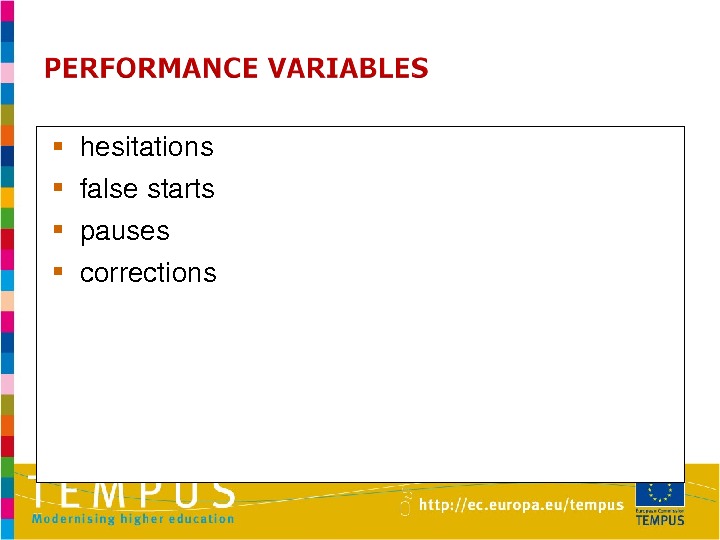
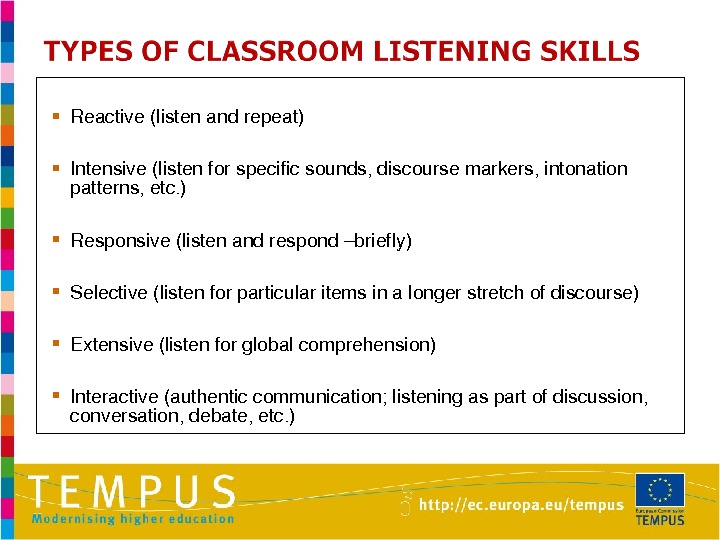
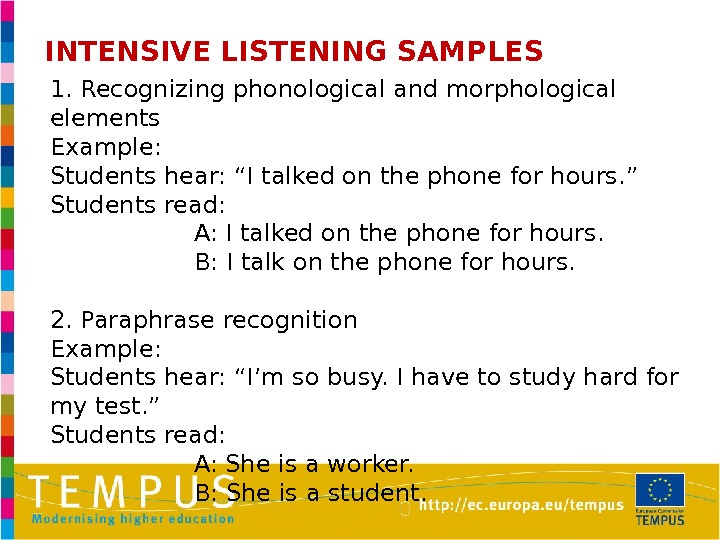
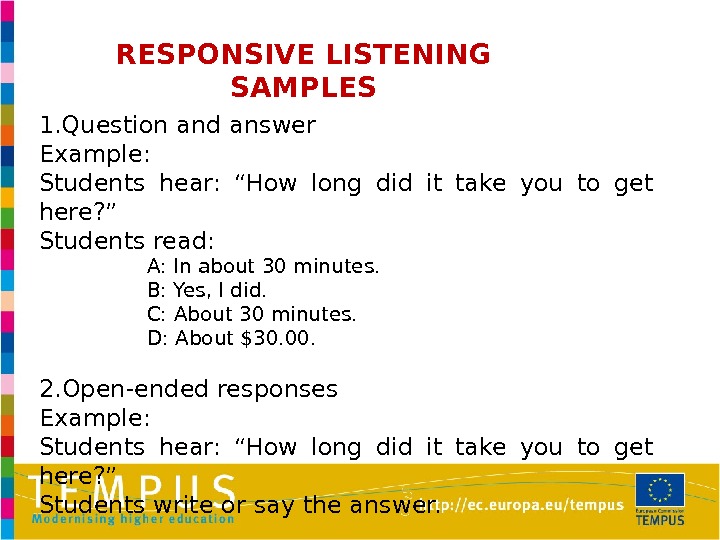

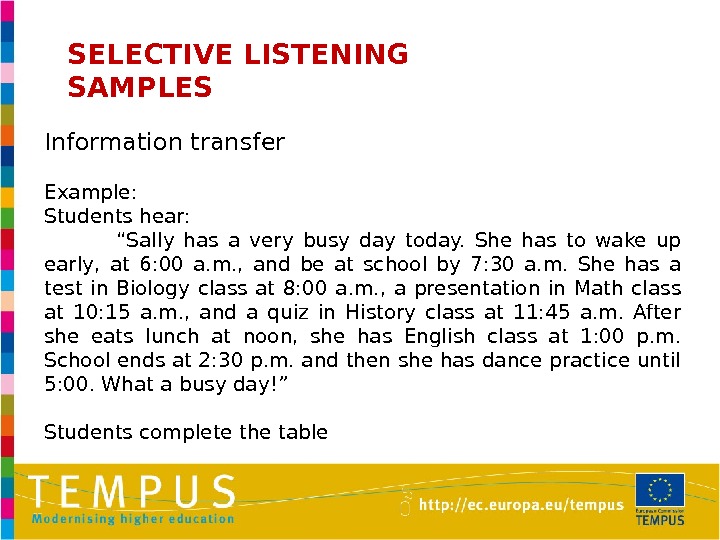
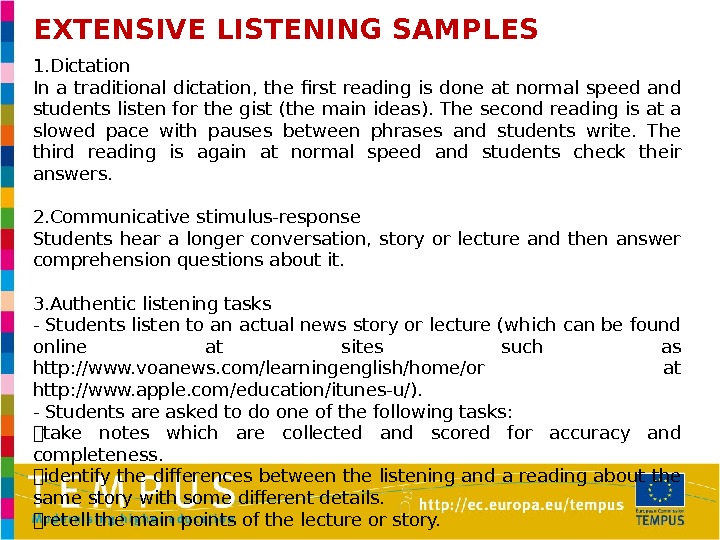
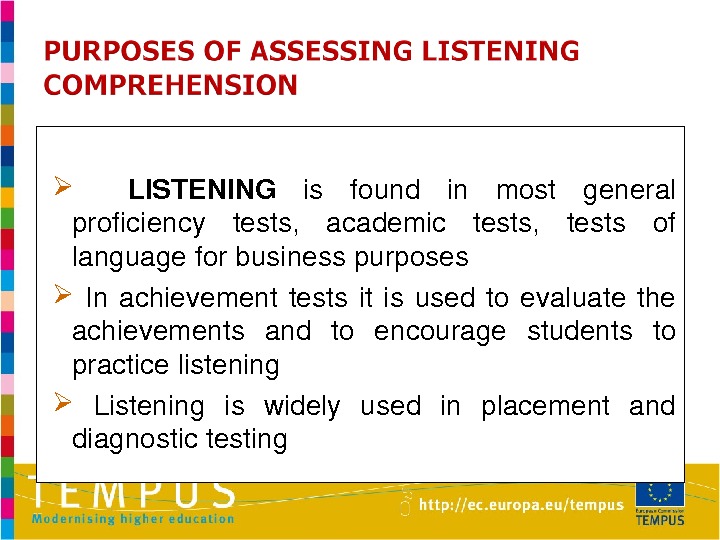
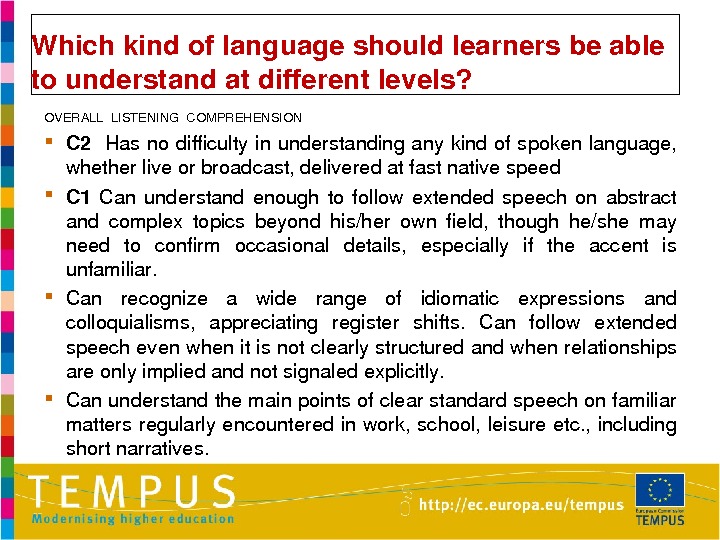
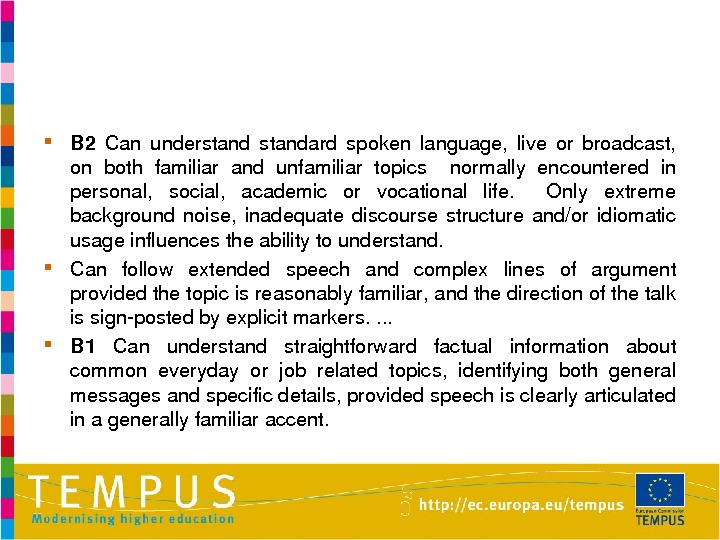
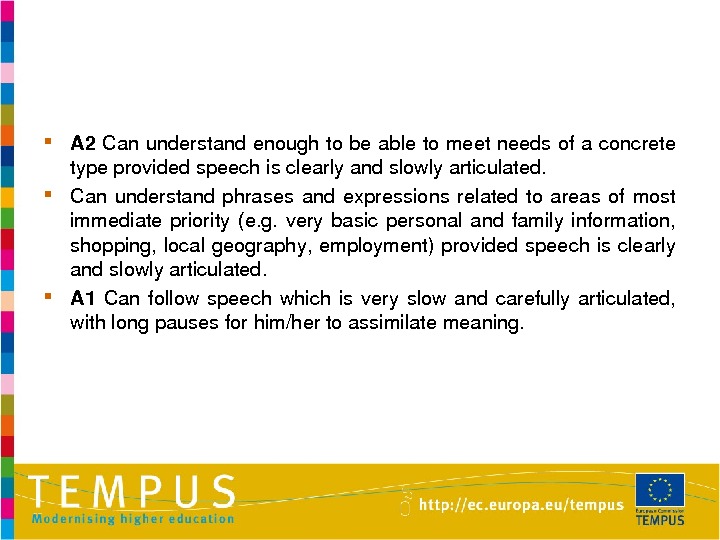
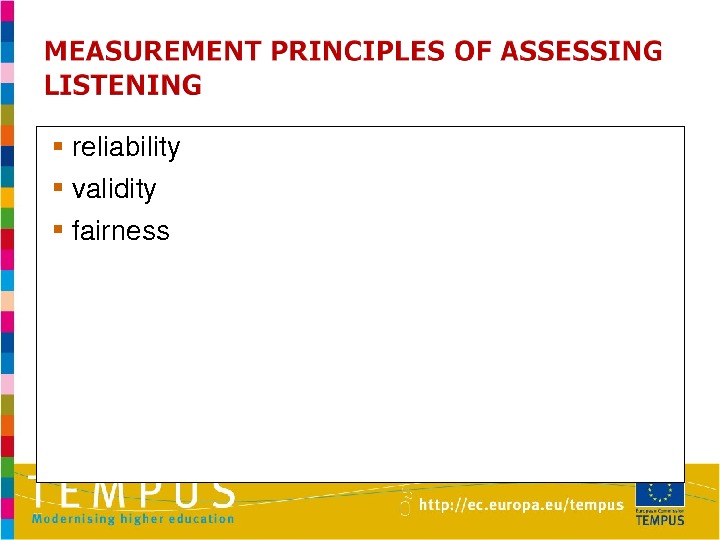
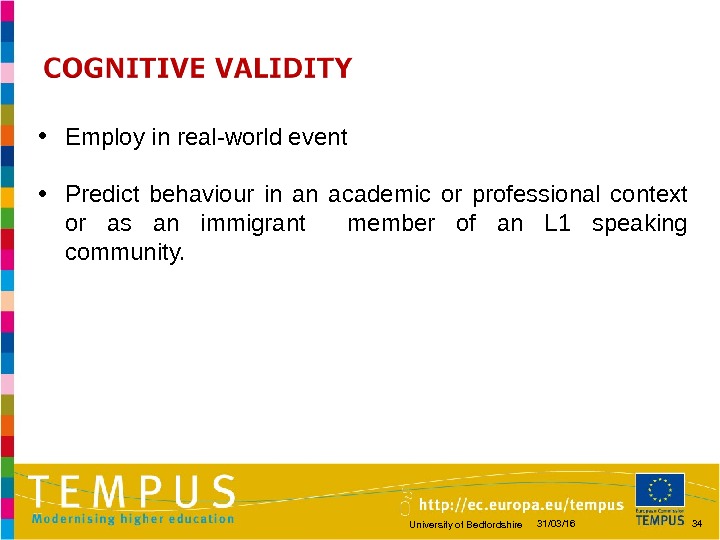
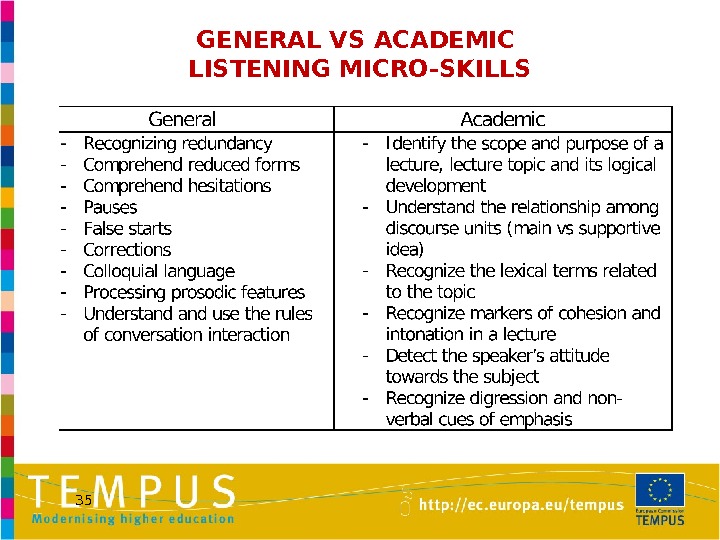
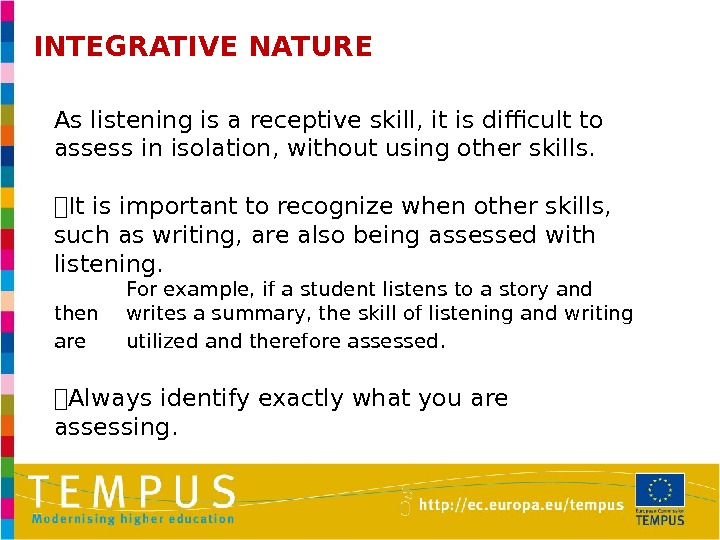
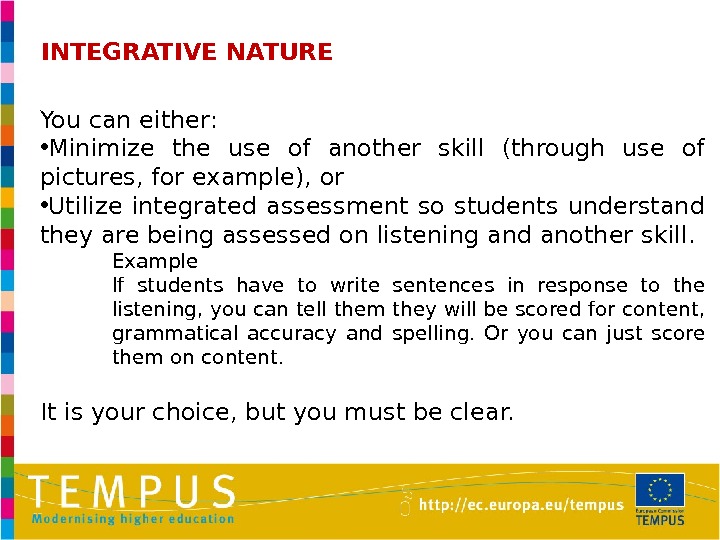
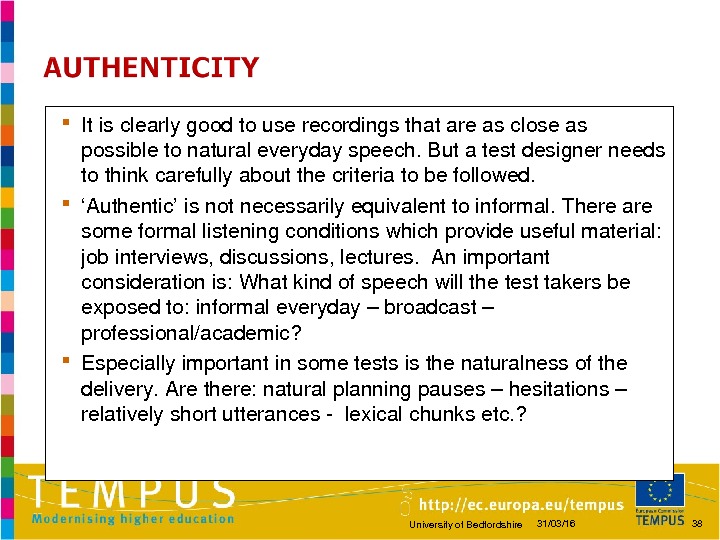
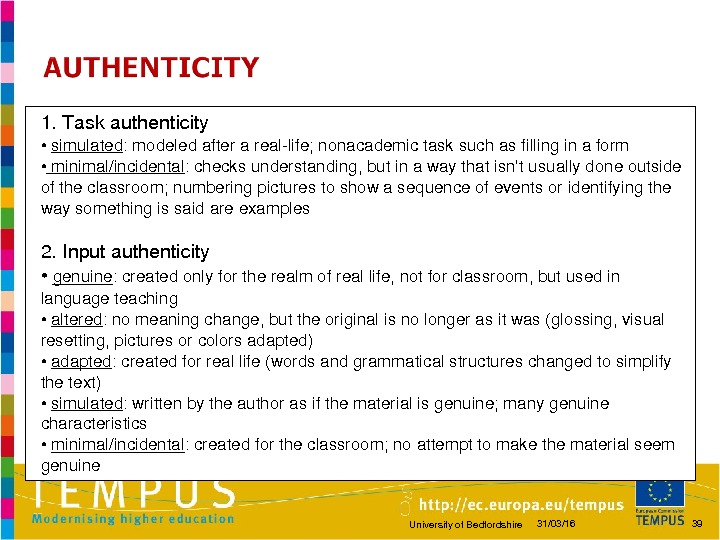
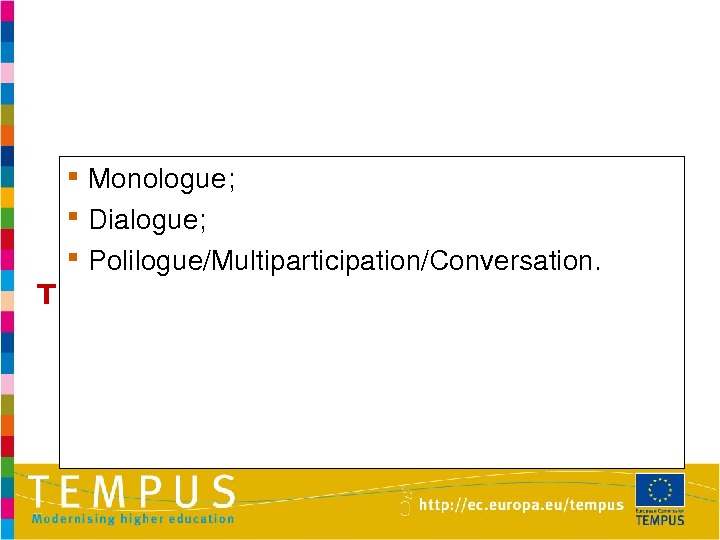
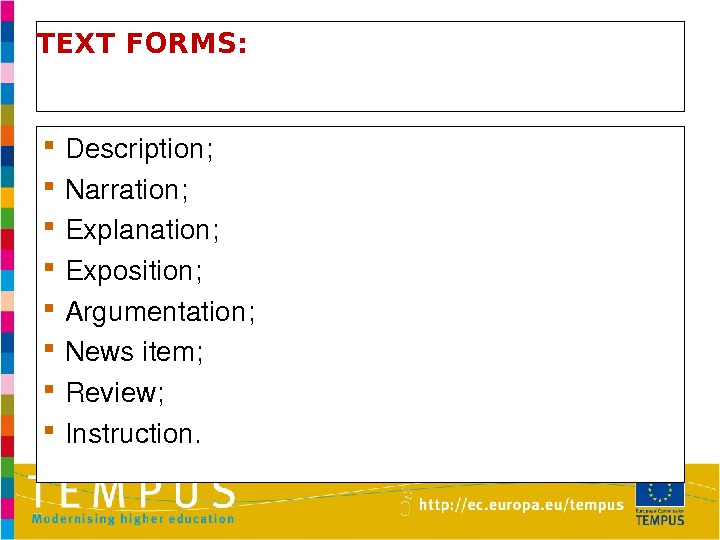
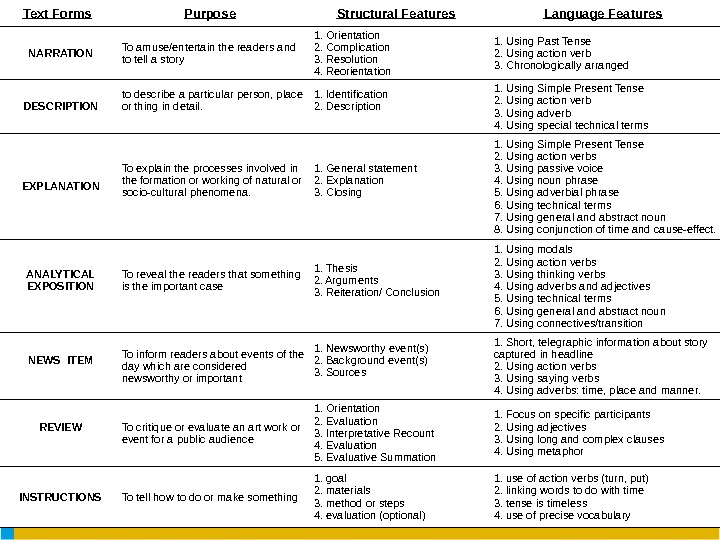
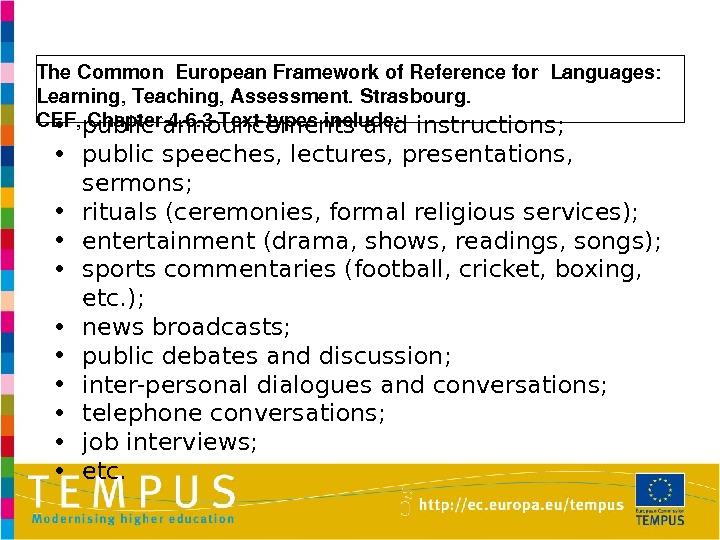
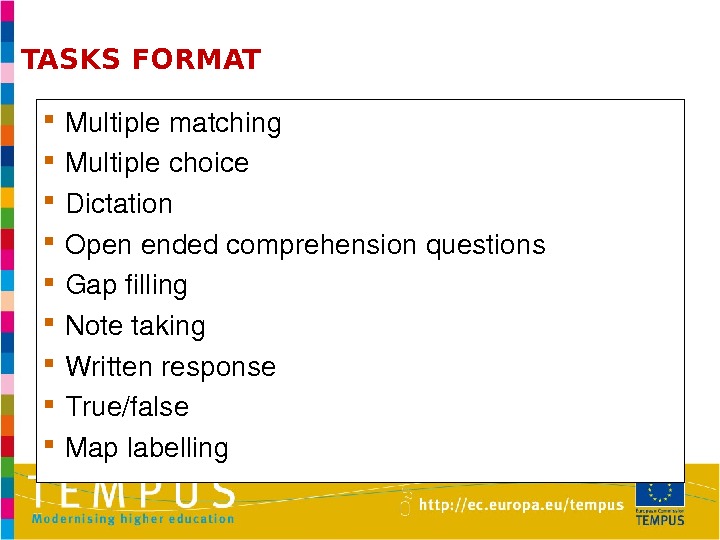
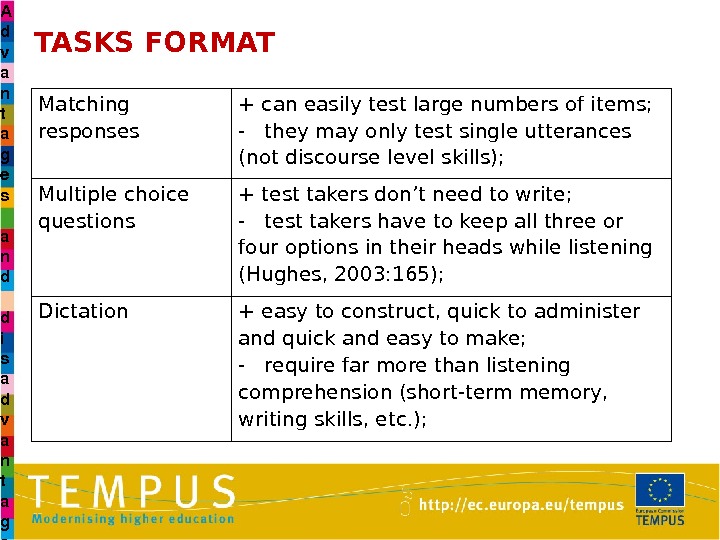
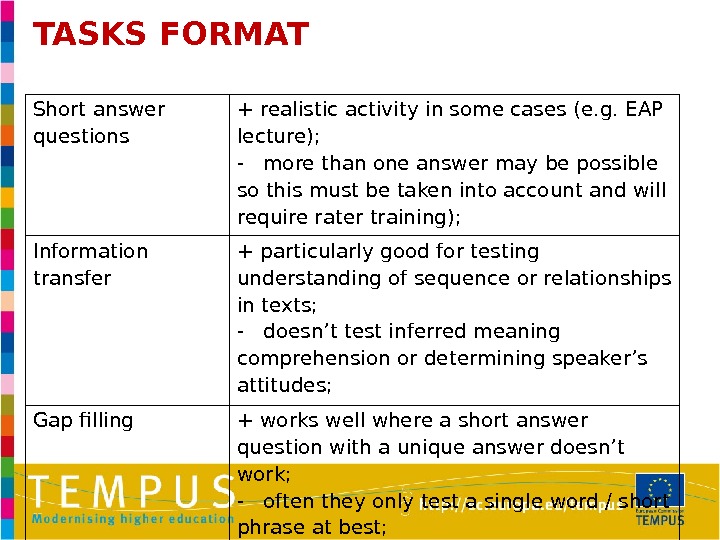
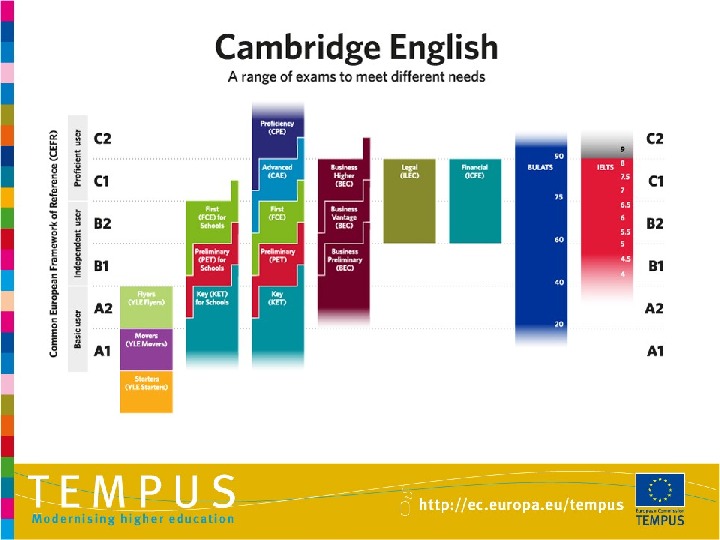
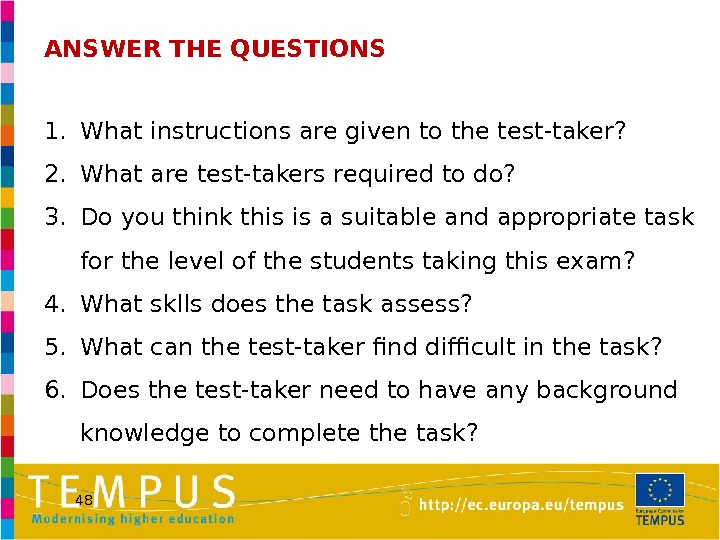
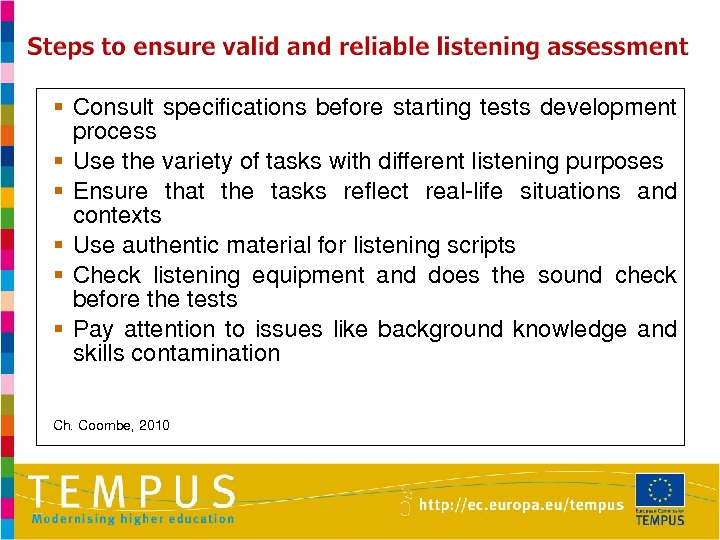


5_listening_slides_for_lectures.ppt
- Размер: 4.7 Mегабайта
- Количество слайдов: 51
Описание презентации 1 ASSESSINGSKILLS: LISTENING: purposes andtechniques по слайдам

 ASSESSINGSKILLS: LISTENING: purposes andtechniques • the nature of listening • things that make listening difficult • understand the purpose of teaching and testing listening • test formats and types of listening tests
ASSESSINGSKILLS: LISTENING: purposes andtechniques • the nature of listening • things that make listening difficult • understand the purpose of teaching and testing listening • test formats and types of listening tests
 Therewasanoldowlwholivedinanoak, Themoreheheard , thelesshespoke; Thelesshespoke, themoreheheard Oh, ifmenwerealllikethatwisebird! (Ogdan. Nash)
Therewasanoldowlwholivedinanoak, Themoreheheard , thelesshespoke; Thelesshespoke, themoreheheard Oh, ifmenwerealllikethatwisebird! (Ogdan. Nash)
 listeningisatwostageprocessinvolving, inthe firstinstance, theextractionofbasicinformation followedbytheuseofthatlanguagefora communicativepurpose(Buck, 2001: 510).
listeningisatwostageprocessinvolving, inthe firstinstance, theextractionofbasicinformation followedbytheuseofthatlanguagefora communicativepurpose(Buck, 2001: 510).
 GLOSSARY Bottomup describesaprocessthatbuildssmallerunitsintolargerones (syllablesintowordsandwordsintophrases) Topdown Strictlyspeaking, describesaviewoflisteningasaprocessthat useslargerunitsinordertoidentifysmallerones(e. g. wordlevel informationtorecognizephonemes) Input thespeechthatreachesalistener’sear: sometimesassumedto beacousticinform, sometimesassumedtohavebeenanalyzed bythelistenerintophonemes Reduction the way in which words may become reduced in length and reshapediftheydonothaveaprominentroleorintonationgroup Redundancy naturalrepetitivenessofspeech, wherespeakersoftenreiterate orrephraseinformationtheyhavealreadygiven
GLOSSARY Bottomup describesaprocessthatbuildssmallerunitsintolargerones (syllablesintowordsandwordsintophrases) Topdown Strictlyspeaking, describesaviewoflisteningasaprocessthat useslargerunitsinordertoidentifysmallerones(e. g. wordlevel informationtorecognizephonemes) Input thespeechthatreachesalistener’sear: sometimesassumedto beacousticinform, sometimesassumedtohavebeenanalyzed bythelistenerintophonemes Reduction the way in which words may become reduced in length and reshapediftheydonothaveaprominentroleorintonationgroup Redundancy naturalrepetitivenessofspeech, wherespeakersoftenreiterate orrephraseinformationtheyhavealreadygiven
 GLOSSARY Phonemevariation thewayinwhichthesoundsofalanguagevaryaccordingtothe soundsthatadjointhem, thetypeofspeechandthespeaker Chunks smallgroupsofwordsthatcommonlyoccurtogether Schema acomplexknowledgestructureinthemindwhichgroupsall thatanindividualknowsabout, orassociateswith, aparticular concept Authenticrecordingswhichwerenotmadewithlanguagelearninginmind Elision missingoutasoundinordertomakeawordortwoadjoining wordseasiertoproduce Interactivelistening situationwherealistenerhastorespondtothespeaker Workingmemory acomponentofmemorywhichholdsshortterminformationand worksuponit. Limitedinhowmuchitcanholdandtherefore howmuchattentioncanbeallocatedtoatask Extensivelistening apreliminaryhearingofarecording, toidentifythemainpoints
GLOSSARY Phonemevariation thewayinwhichthesoundsofalanguagevaryaccordingtothe soundsthatadjointhem, thetypeofspeechandthespeaker Chunks smallgroupsofwordsthatcommonlyoccurtogether Schema acomplexknowledgestructureinthemindwhichgroupsall thatanindividualknowsabout, orassociateswith, aparticular concept Authenticrecordingswhichwerenotmadewithlanguagelearninginmind Elision missingoutasoundinordertomakeawordortwoadjoining wordseasiertoproduce Interactivelistening situationwherealistenerhastorespondtothespeaker Workingmemory acomponentofmemorywhichholdsshortterminformationand worksuponit. Limitedinhowmuchitcanholdandtherefore howmuchattentioncanbeallocatedtoatask Extensivelistening apreliminaryhearingofarecording, toidentifythemainpoints
 Active: Thelistenerhastoremakethespeaker’sintended meaning. Timeconstrained: Theinputisnotunderthecontrolofthe listener Transitory: Notexttoreferbackto. Thelistenerhasto carryforwardarecallofwhathasbeensaidinhis/her mind. Oral: Theinputcontainsfeatureswhichreflecttheway speechisproduced (from. Dr. John. Fieldpresentation)
Active: Thelistenerhastoremakethespeaker’sintended meaning. Timeconstrained: Theinputisnotunderthecontrolofthe listener Transitory: Notexttoreferbackto. Thelistenerhasto carryforwardarecallofwhathasbeensaidinhis/her mind. Oral: Theinputcontainsfeatureswhichreflecttheway speechisproduced (from. Dr. John. Fieldpresentation)

 speechperception wordrecognition sentenceprocessing constructtheliteralmeaning ofthesentence holdtheinforamtion inshorttermmemory recognizecohesivedevices indiscourse infertheimpliedmeaningandintention predictwhatistobesaid decidehowto respond
speechperception wordrecognition sentenceprocessing constructtheliteralmeaning ofthesentence holdtheinforamtion inshorttermmemory recognizecohesivedevices indiscourse infertheimpliedmeaningandintention predictwhatistobesaid decidehowto respond
 It sees comprehension as a matter of listeners first decoding the smallest elements of what they hear – the sounds. These sounds are then combined and the individual words are decoded. The words are then combined into sentences and the listener works out the meaning. To this will be added recognition of features such as intonation and so on, until we finally reach the non-linguistic content. Rumelhart and Ortony (1977)
It sees comprehension as a matter of listeners first decoding the smallest elements of what they hear – the sounds. These sounds are then combined and the individual words are decoded. The words are then combined into sentences and the listener works out the meaning. To this will be added recognition of features such as intonation and so on, until we finally reach the non-linguistic content. Rumelhart and Ortony (1977)
 • Distinguishing the sounds of English and identifying meaning from them. • Recognizing stress, rhythm, intonation, and how these produce meaning. • Processing speech at different speeds. • Recognizing grammatical word classes (such as verbs), systems (such as tense), and rules. • Recognizing cohesive devices in spoken discourse. BOTTOM-UP SKILLS
• Distinguishing the sounds of English and identifying meaning from them. • Recognizing stress, rhythm, intonation, and how these produce meaning. • Processing speech at different speeds. • Recognizing grammatical word classes (such as verbs), systems (such as tense), and rules. • Recognizing cohesive devices in spoken discourse. BOTTOM-UP SKILLS
 12 TOP-DOWN SKILLS Mc. Kenzy brought me another present today. It was too late to save it so I buried it in the garden. I think I’m going to have to put a bell round his neck. • Recognizing the communicative functions of an utterance. • Inferring context and connections using real-world knowledge (schemata). • Understanding main ideas, supporting ideas, new information, and given information in a listening. • Developing listening strategies such as detecting key words, guessing meaning from context, asking for help, and indicating comprehension or lack thereof.
12 TOP-DOWN SKILLS Mc. Kenzy brought me another present today. It was too late to save it so I buried it in the garden. I think I’m going to have to put a bell round his neck. • Recognizing the communicative functions of an utterance. • Inferring context and connections using real-world knowledge (schemata). • Understanding main ideas, supporting ideas, new information, and given information in a listening. • Developing listening strategies such as detecting key words, guessing meaning from context, asking for help, and indicating comprehension or lack thereof.
 TOP-DOWN or BOTTOM-UP PROCESSING Bottom-up processes help comprehension through: • decoding (word-level) • focusing on vocabulary or grammar Top-down processes help comprehension through: • using prior content knowledge • using knowledge of the genre (textual schemata) • using knowledge of language
TOP-DOWN or BOTTOM-UP PROCESSING Bottom-up processes help comprehension through: • decoding (word-level) • focusing on vocabulary or grammar Top-down processes help comprehension through: • using prior content knowledge • using knowledge of the genre (textual schemata) • using knowledge of language
 isnoteithertopdownorbottomupprocessing but aninteractive, interpretiveprocess listenersusebothpriorknowledgeand linguisticknowledgeinunderstanding messages.
isnoteithertopdownorbottomupprocessing but aninteractive, interpretiveprocess listenersusebothpriorknowledgeand linguisticknowledgeinunderstanding messages.
 phonologicalmodification clustering reducedforms / redundancy colloquialspeechandaccents prosodicfeatures speechrate performancevariables discoursestructure
phonologicalmodification clustering reducedforms / redundancy colloquialspeechandaccents prosodicfeatures speechrate performancevariables discoursestructure
 Highlyvariable. The forms taken by phonemes and words vary greatlyfromcitationforms. There is nothing like the standardized spelling systemofreading. They depend on g ender, age , shape and size ofvocaltract.
Highlyvariable. The forms taken by phonemes and words vary greatlyfromcitationforms. There is nothing like the standardized spelling systemofreading. They depend on g ender, age , shape and size ofvocaltract.
 Spokenlanguageis“chunked”intophrasesand clauses.
Spokenlanguageis“chunked”intophrasesand clauses.
 phonological morphological (contractionslike. I ll); ‟ syntactic(ellipticalforms like Whenwillyoube back? Tomorrow, maybe ); pragmatic( Mom! Phone!) rephrasings repetitions elaborations insertions
phonological morphological (contractionslike. I ll); ‟ syntactic(ellipticalforms like Whenwillyoube back? Tomorrow, maybe ); pragmatic( Mom! Phone!) rephrasings repetitions elaborations insertions
 standard. GB; standard. US/Aus. NZ; Nonstandard; L 2 accent
standard. GB; standard. US/Aus. NZ; Nonstandard; L 2 accent
 Prosody therhythm, stress, andintonationof speech. Itreflectsvariousfeaturesofthespeakerorthe utterance: theemotionalstate; theformofthe utterance(statement, question, orcommand); thepresenceofironyorsarcasm; emphasis, contrast.
Prosody therhythm, stress, andintonationof speech. Itreflectsvariousfeaturesofthespeakerorthe utterance: theemotionalstate; theformofthe utterance(statement, question, orcommand); thepresenceofironyorsarcasm; emphasis, contrast.
 Ingeneralolderpeoplehaveaslowerspeech malestendtospeakslightlyfasterthanfemales theeffectof. L 1(nativelanguage)on. L 2 (secondlanguage)speakingrateis. L 1 dependent.
Ingeneralolderpeoplehaveaslowerspeech malestendtospeakslightlyfasterthanfemales theeffectof. L 1(nativelanguage)on. L 2 (secondlanguage)speakingrateis. L 1 dependent.
 hesitations falsestarts pauses corrections
hesitations falsestarts pauses corrections
 Reactive(listenandrepeat) Intensive(listenforspecificsounds, discoursemarkers, intonation patterns, etc. ) Responsive(listenandrespond–briefly) Selective(listenforparticularitemsinalongerstretchofdiscourse) Extensive(listenforglobalcomprehension) Interactive(authenticcommunication; listeningaspartofdiscussion, conversation, debate, etc. )
Reactive(listenandrepeat) Intensive(listenforspecificsounds, discoursemarkers, intonation patterns, etc. ) Responsive(listenandrespond–briefly) Selective(listenforparticularitemsinalongerstretchofdiscourse) Extensive(listenforglobalcomprehension) Interactive(authenticcommunication; listeningaspartofdiscussion, conversation, debate, etc. )
 1. Recognizing phonological and morphological elements Example: Students hear: “I talked on the phone for hours. ” Students read: A: I talked on the phone for hours. B: I talk on the phone for hours. 2. Paraphrase recognition Example: Students hear: “I’m so busy. I have to study hard for my test. ” Students read: A: She is a worker. B: She is a student. INTENSIVE LISTENING SAMPLES
1. Recognizing phonological and morphological elements Example: Students hear: “I talked on the phone for hours. ” Students read: A: I talked on the phone for hours. B: I talk on the phone for hours. 2. Paraphrase recognition Example: Students hear: “I’m so busy. I have to study hard for my test. ” Students read: A: She is a worker. B: She is a student. INTENSIVE LISTENING SAMPLES
 1. Question and answer Example: Students hear: “How long did it take you to get here? ” Students read: A: In about 30 minutes. B: Yes, I did. C: About 30 minutes. D: About $30. 00. 2. Open-ended responses Example: Students hear: “How long did it take you to get here? ” Students write or say the answer. RESPONSIVE LISTENING SAMPLES
1. Question and answer Example: Students hear: “How long did it take you to get here? ” Students read: A: In about 30 minutes. B: Yes, I did. C: About 30 minutes. D: About $30. 00. 2. Open-ended responses Example: Students hear: “How long did it take you to get here? ” Students write or say the answer. RESPONSIVE LISTENING SAMPLES
 Listening cloze Example: Students hear: “Good morning, ladies and gentlemen. I regret to inform you that flight 928 to Baltimore, Maryland has been delayed for 54 minutes. The new departure time is 10: 17 a. m. Please remain close to gate 39 in case of further changes. ” Students read and complete: Good morning, ladies and gentlemen. I regret to inform you that flight _______ to Baltimore, Maryland has been delayed for _______ minutes. The new departure time is _____ a. m. Please remain close to gate ____ in case of further changes. Note: This is a fairly simple cloze because the students must only attend to the numbers and where they occur. Cloze exercises can be more difficult for more advanced learners. SELECTIVE LISTENING SAMPLES
Listening cloze Example: Students hear: “Good morning, ladies and gentlemen. I regret to inform you that flight 928 to Baltimore, Maryland has been delayed for 54 minutes. The new departure time is 10: 17 a. m. Please remain close to gate 39 in case of further changes. ” Students read and complete: Good morning, ladies and gentlemen. I regret to inform you that flight _______ to Baltimore, Maryland has been delayed for _______ minutes. The new departure time is _____ a. m. Please remain close to gate ____ in case of further changes. Note: This is a fairly simple cloze because the students must only attend to the numbers and where they occur. Cloze exercises can be more difficult for more advanced learners. SELECTIVE LISTENING SAMPLES
 Information transfer Example: Students hear: “ Sally has a very busy day today. She has to wake up early, at 6: 00 a. m. , and be at school by 7: 30 a. m. She has a test in Biology class at 8: 00 a. m. , a presentation in Math class at 10: 15 a. m. , and a quiz in History class at 11: 45 a. m. After she eats lunch at noon, she has English class at 1: 00 p. m. School ends at 2: 30 p. m. and then she has dance practice until 5: 00. What a busy day!” Students complete the table SELECTIVE LISTENING SAMPLES
Information transfer Example: Students hear: “ Sally has a very busy day today. She has to wake up early, at 6: 00 a. m. , and be at school by 7: 30 a. m. She has a test in Biology class at 8: 00 a. m. , a presentation in Math class at 10: 15 a. m. , and a quiz in History class at 11: 45 a. m. After she eats lunch at noon, she has English class at 1: 00 p. m. School ends at 2: 30 p. m. and then she has dance practice until 5: 00. What a busy day!” Students complete the table SELECTIVE LISTENING SAMPLES
 1. Dictation In a traditional dictation, the first reading is done at normal speed and students listen for the gist (the main ideas). The second reading is at a slowed pace with pauses between phrases and students write. The third reading is again at normal speed and students check their answers. 2. Communicative stimulus-response Students hear a longer conversation, story or lecture and then answer comprehension questions about it. 3. Authentic listening tasks — Students listen to an actual news story or lecture (which can be found online at sites such as http: //www. voanews. com/learningenglish/home/or at http: //www. apple. com/education/itunes-u/). — Students are asked to do one of the following tasks: take notes which are collected and scored for accuracy and completeness. identify the differences between the listening and a reading about the same story with some different details. retell the main points of the lecture or story. EXTENSIVE LISTENING SAMPLES
1. Dictation In a traditional dictation, the first reading is done at normal speed and students listen for the gist (the main ideas). The second reading is at a slowed pace with pauses between phrases and students write. The third reading is again at normal speed and students check their answers. 2. Communicative stimulus-response Students hear a longer conversation, story or lecture and then answer comprehension questions about it. 3. Authentic listening tasks — Students listen to an actual news story or lecture (which can be found online at sites such as http: //www. voanews. com/learningenglish/home/or at http: //www. apple. com/education/itunes-u/). — Students are asked to do one of the following tasks: take notes which are collected and scored for accuracy and completeness. identify the differences between the listening and a reading about the same story with some different details. retell the main points of the lecture or story. EXTENSIVE LISTENING SAMPLES
 LISTENING is found in most general proficiency tests, academic tests, tests of languageforbusinesspurposes In achievement tests it is used to evaluate the achievements and to encourage students to practicelistening Listening is widely used in placement and diagnostictesting
LISTENING is found in most general proficiency tests, academic tests, tests of languageforbusinesspurposes In achievement tests it is used to evaluate the achievements and to encourage students to practicelistening Listening is widely used in placement and diagnostictesting
 Whichkindoflanguageshouldlearnersbeable tounderstandatdifferentlevels? OVERALLLISTENINGCOMPREHENSION C 2 Has no difficulty in understanding any kind of spoken language, whetherliveorbroadcast, deliveredatfastnativespeed C 1 Can understand enough to follow extended speech on abstract and complex topics beyond his/her own field, though he/she may need to confirm occasional details, especially if the accent is unfamiliar. Can recognize a wide range of idiomatic expressions and colloquialisms, appreciating register shifts. Can follow extended speechevenwhenitisnotclearlystructuredandwhenrelationships areonlyimpliedandnotsignaledexplicitly. Canunderstandthemainpointsofclearstandardspeechonfamiliar matters regularly encountered in work, school, leisure etc. , including shortnarratives.
Whichkindoflanguageshouldlearnersbeable tounderstandatdifferentlevels? OVERALLLISTENINGCOMPREHENSION C 2 Has no difficulty in understanding any kind of spoken language, whetherliveorbroadcast, deliveredatfastnativespeed C 1 Can understand enough to follow extended speech on abstract and complex topics beyond his/her own field, though he/she may need to confirm occasional details, especially if the accent is unfamiliar. Can recognize a wide range of idiomatic expressions and colloquialisms, appreciating register shifts. Can follow extended speechevenwhenitisnotclearlystructuredandwhenrelationships areonlyimpliedandnotsignaledexplicitly. Canunderstandthemainpointsofclearstandardspeechonfamiliar matters regularly encountered in work, school, leisure etc. , including shortnarratives.
 B 2 Can understandard spoken language, live or broadcast, on both familiar and unfamiliar topics normally encountered in personal, social, academic or vocational life. Only extreme background noise, inadequate discourse structure and/or idiomatic usageinfluencestheabilitytounderstand. Can follow extended speech and complex lines of argument providedthetopicisreasonablyfamiliar, andthedirectionofthetalk issignpostedbyexplicitmarkers. . B 1 Can understand straightforward factual information about common everyday or job related topics, identifying both general messagesandspecificdetails, providedspeechisclearlyarticulated inagenerallyfamiliaraccent.
B 2 Can understandard spoken language, live or broadcast, on both familiar and unfamiliar topics normally encountered in personal, social, academic or vocational life. Only extreme background noise, inadequate discourse structure and/or idiomatic usageinfluencestheabilitytounderstand. Can follow extended speech and complex lines of argument providedthetopicisreasonablyfamiliar, andthedirectionofthetalk issignpostedbyexplicitmarkers. . B 1 Can understand straightforward factual information about common everyday or job related topics, identifying both general messagesandspecificdetails, providedspeechisclearlyarticulated inagenerallyfamiliaraccent.
 A 2 Can understand enoughto be able tomeet needs of a concrete typeprovidedspeechisclearlyandslowlyarticulated. Can understand phrases and expressions related to areas of most immediate priority (e. g. very basic personal and family information, shopping, local geography, employment) provided speech is clearly andslowlyarticulated. A 1 Can follow speech which is very slow and carefully articulated, withlongpausesforhim/hertoassimilatemeaning.
A 2 Can understand enoughto be able tomeet needs of a concrete typeprovidedspeechisclearlyandslowlyarticulated. Can understand phrases and expressions related to areas of most immediate priority (e. g. very basic personal and family information, shopping, local geography, employment) provided speech is clearly andslowlyarticulated. A 1 Can follow speech which is very slow and carefully articulated, withlongpausesforhim/hertoassimilatemeaning.
 reliability validity fairness
reliability validity fairness
 31/03/16 Universityof. Bedfordshire 34 • Employ in real-world event • Predict behaviour in an academic or professional context or as an immigrant member of an L 1 speaking community.
31/03/16 Universityof. Bedfordshire 34 • Employ in real-world event • Predict behaviour in an academic or professional context or as an immigrant member of an L 1 speaking community.
 35 GENERAL VS ACADEMIC LISTENING MICRO-SKILLS
35 GENERAL VS ACADEMIC LISTENING MICRO-SKILLS
 As listening is a receptive skill, it is difficult to assess in isolation, without using other skills. It is important to recognize when other skills, such as writing, are also being assessed with listening. For example, if a student listens to a story and then writes a summary, the skill of listening and writing are utilized and therefore assessed. Always identify exactly what you are assessing. INTEGRATIVE NATUR
As listening is a receptive skill, it is difficult to assess in isolation, without using other skills. It is important to recognize when other skills, such as writing, are also being assessed with listening. For example, if a student listens to a story and then writes a summary, the skill of listening and writing are utilized and therefore assessed. Always identify exactly what you are assessing. INTEGRATIVE NATUR
 You can either: • Minimize the use of another skill (through use of pictures, for example), or • Utilize integrated assessment so students understand they are being assessed on listening and another skill. Example If students have to write sentences in response to the listening, you can tell them they will be scored for content, grammatical accuracy and spelling. Or you can just score them on content. It is your choice, but you must be clear. INTEGRATIVE NATUR
You can either: • Minimize the use of another skill (through use of pictures, for example), or • Utilize integrated assessment so students understand they are being assessed on listening and another skill. Example If students have to write sentences in response to the listening, you can tell them they will be scored for content, grammatical accuracy and spelling. Or you can just score them on content. It is your choice, but you must be clear. INTEGRATIVE NATUR
 Itisclearlygoodtouserecordingsthatareascloseas possibletonaturaleverydayspeech. Butatestdesignerneeds tothinkcarefullyaboutthecriteriatobefollowed. ‘ Authentic’isnotnecessarilyequivalenttoinformal. Thereare someformallisteningconditionswhichprovideusefulmaterial: jobinterviews, discussions, lectures. Animportant considerationis: Whatkindofspeechwillthetesttakersbe exposedto: informaleveryday–broadcast– professional/academic? Especiallyimportantinsometestsisthenaturalnessofthe delivery. Arethere: naturalplanningpauses–hesitations– relativelyshortutteranceslexicalchunksetc. ? 31/03/16 Universityof. Bedfordshire
Itisclearlygoodtouserecordingsthatareascloseas possibletonaturaleverydayspeech. Butatestdesignerneeds tothinkcarefullyaboutthecriteriatobefollowed. ‘ Authentic’isnotnecessarilyequivalenttoinformal. Thereare someformallisteningconditionswhichprovideusefulmaterial: jobinterviews, discussions, lectures. Animportant considerationis: Whatkindofspeechwillthetesttakersbe exposedto: informaleveryday–broadcast– professional/academic? Especiallyimportantinsometestsisthenaturalnessofthe delivery. Arethere: naturalplanningpauses–hesitations– relativelyshortutteranceslexicalchunksetc. ? 31/03/16 Universityof. Bedfordshire
 1. Taskauthenticity • simulated : modeledafterareallife; nonacademictasksuchasfillinginaform • minimal/incidental : checksunderstanding, butinawaythatisn’tusuallydoneoutside oftheclassroom; numberingpicturestoshowasequenceofeventsoridentifyingthe waysomethingissaidareexamples 2. Inputauthenticity • genuine : createdonlyfortherealmofreallife, notforclassroom, butusedin languageteaching • altered : nomeaningchange, buttheoriginalisnolongerasitwas(glossing, visual resetting, picturesorcolorsadapted) • adapted : createdforreallife(wordsandgrammaticalstructureschangedtosimplify thetext) • simulated : writtenbytheauthorasifthematerialisgenuine; manygenuine characteristics • minimal/incidental : createdfortheclassroom; noattempttomakethematerialseem genuine 31/03/16 Universityof. Bedfordshire
1. Taskauthenticity • simulated : modeledafterareallife; nonacademictasksuchasfillinginaform • minimal/incidental : checksunderstanding, butinawaythatisn’tusuallydoneoutside oftheclassroom; numberingpicturestoshowasequenceofeventsoridentifyingthe waysomethingissaidareexamples 2. Inputauthenticity • genuine : createdonlyfortherealmofreallife, notforclassroom, butusedin languageteaching • altered : nomeaningchange, buttheoriginalisnolongerasitwas(glossing, visual resetting, picturesorcolorsadapted) • adapted : createdforreallife(wordsandgrammaticalstructureschangedtosimplify thetext) • simulated : writtenbytheauthorasifthematerialisgenuine; manygenuine characteristics • minimal/incidental : createdfortheclassroom; noattempttomakethematerialseem genuine 31/03/16 Universityof. Bedfordshire
 TEXT TYPES (HUGHESA. ) : Monologue; Dialogue; Polilogue/Multiparticipation/Conversation.
TEXT TYPES (HUGHESA. ) : Monologue; Dialogue; Polilogue/Multiparticipation/Conversation.
 TEXT FORMS: Description; Narration; Explanation; Exposition; Argumentation; Newsitem; Review ; Instruction.
TEXT FORMS: Description; Narration; Explanation; Exposition; Argumentation; Newsitem; Review ; Instruction.
 Text Forms Purpose Structural Features Language Features NARRATION To amuse/entertain the readers and to tell a story 1. Orientation 2. Complication 3. Resolution 4. Reorientation 1. Using Past Tense 2. Using action verb 3. Chronologically arranged DESCRIPTION to describe a particular person, place or thing in detail. 1. Identification 2. Description 1. Using Simple Present Tense 2. Using action verb 3. Using adverb 4. Using special technical terms EXPLANATION To explain the processes involved in the formation or working of natural or socio-cultural phenomena. 1. General statement 2. Explanation 3. Closing 1. Using Simple Present Tense 2. Using action verbs 3. Using passive voice 4. Using noun phrase 5. Using adverbial phrase 6. Using technical terms 7. Using general and abstract noun 8. Using conjunction of time and cause-effect. ANALYTICAL EXPOSITION To reveal the readers that something is the important case 1. Thesis 2. Arguments 3. Reiteration/ Conclusion 1. Using modals 2. Using action verbs 3. Using thinking verbs 4. Using adverbs and adjective s 5. Using technical terms 6. Using general and abstract noun 7. Using connectives/transition NEWS ITEM To inform readers about events of the day which are considered newsworthy or important 1. Newsworthy event(s) 2. Background event(s) 3. Sources 1. Short, telegraphic information about story captured in headline 2. Using action verbs 3. Using saying verbs 4. Using adverbs: time, place and manner. REVIEW To critique or evaluate an art work or event for a public audience 1. Orientation 2. Evaluation 3. Interpretative Recount 4. Evaluation 5. Evaluative Summation 1. Focus on specific participants 2. Using adjectives 3. Using long and complex clauses 4. Using metaphor INSTRUCTIONS To tell how to do or make something 1. goal 2. materials 3. method or steps 4. evaluation (optional) 1. use of action verbs (turn, put) 2. linking words to do with time 3. tense is timeless 4. use of precise vocabulary
Text Forms Purpose Structural Features Language Features NARRATION To amuse/entertain the readers and to tell a story 1. Orientation 2. Complication 3. Resolution 4. Reorientation 1. Using Past Tense 2. Using action verb 3. Chronologically arranged DESCRIPTION to describe a particular person, place or thing in detail. 1. Identification 2. Description 1. Using Simple Present Tense 2. Using action verb 3. Using adverb 4. Using special technical terms EXPLANATION To explain the processes involved in the formation or working of natural or socio-cultural phenomena. 1. General statement 2. Explanation 3. Closing 1. Using Simple Present Tense 2. Using action verbs 3. Using passive voice 4. Using noun phrase 5. Using adverbial phrase 6. Using technical terms 7. Using general and abstract noun 8. Using conjunction of time and cause-effect. ANALYTICAL EXPOSITION To reveal the readers that something is the important case 1. Thesis 2. Arguments 3. Reiteration/ Conclusion 1. Using modals 2. Using action verbs 3. Using thinking verbs 4. Using adverbs and adjective s 5. Using technical terms 6. Using general and abstract noun 7. Using connectives/transition NEWS ITEM To inform readers about events of the day which are considered newsworthy or important 1. Newsworthy event(s) 2. Background event(s) 3. Sources 1. Short, telegraphic information about story captured in headline 2. Using action verbs 3. Using saying verbs 4. Using adverbs: time, place and manner. REVIEW To critique or evaluate an art work or event for a public audience 1. Orientation 2. Evaluation 3. Interpretative Recount 4. Evaluation 5. Evaluative Summation 1. Focus on specific participants 2. Using adjectives 3. Using long and complex clauses 4. Using metaphor INSTRUCTIONS To tell how to do or make something 1. goal 2. materials 3. method or steps 4. evaluation (optional) 1. use of action verbs (turn, put) 2. linking words to do with time 3. tense is timeless 4. use of precise vocabulary
 The. Common. European. Frameworkof. Referencefor. Languages: Learning, Teaching, Assessment. Strasbourg. CEF, Chapter 4. 6. 3 Texttypesinclude: • public announcements and instructions; • public speeches, lectures, presentations, sermons; • rituals (ceremonies, formal religious services); • entertainment (drama, shows, readings, songs); • sports commentaries (football, cricket, boxing, etc. ); • news broadcasts; • public debates and discussion; • inter-personal dialogues and conversations; • telephone conversations; • job interviews; • etc.
The. Common. European. Frameworkof. Referencefor. Languages: Learning, Teaching, Assessment. Strasbourg. CEF, Chapter 4. 6. 3 Texttypesinclude: • public announcements and instructions; • public speeches, lectures, presentations, sermons; • rituals (ceremonies, formal religious services); • entertainment (drama, shows, readings, songs); • sports commentaries (football, cricket, boxing, etc. ); • news broadcasts; • public debates and discussion; • inter-personal dialogues and conversations; • telephone conversations; • job interviews; • etc.
 Multiplematching Multiplechoice Dictation Openendedcomprehensionquestions Gapfilling Notetaking Writtenresponse True/false Maplabelling. TASKS F ORMAT
Multiplematching Multiplechoice Dictation Openendedcomprehensionquestions Gapfilling Notetaking Writtenresponse True/false Maplabelling. TASKS F ORMAT
 A d v a n t a g e s a n d d i s a d v a n t a g e s o f d i f f e r e n t t a s k t y p e s ( G a r y B u c k ) Matching responses + can easily test large numbers of items; — they may only test single utterances (not discourse level skills); Multiple choice questions + test takers don’t need to write; — test takers have to keep all three or four options in their heads while listening (Hughes, 2003: 165); Dictation + easy to construct, quick to administer and quick and easy to make; — require far more than listening comprehension (short-term memory, writing skills, etc. ); TASKS FORMAT
A d v a n t a g e s a n d d i s a d v a n t a g e s o f d i f f e r e n t t a s k t y p e s ( G a r y B u c k ) Matching responses + can easily test large numbers of items; — they may only test single utterances (not discourse level skills); Multiple choice questions + test takers don’t need to write; — test takers have to keep all three or four options in their heads while listening (Hughes, 2003: 165); Dictation + easy to construct, quick to administer and quick and easy to make; — require far more than listening comprehension (short-term memory, writing skills, etc. ); TASKS FORMAT
 TASKS FORMAT Short answer questions + realistic activity in some cases (e. g. EAP lecture); — more than one answer may be possible so this must be taken into account and will require rater training); Information transfer + particularly good for testing understanding of sequence or relationships in texts; — doesn’t test inferred meaning comprehension or determining speaker’s attitudes; Gap filling + works well where a short answer question with a unique answer doesn’t work; — often they only test a single word / short phrase at best;
TASKS FORMAT Short answer questions + realistic activity in some cases (e. g. EAP lecture); — more than one answer may be possible so this must be taken into account and will require rater training); Information transfer + particularly good for testing understanding of sequence or relationships in texts; — doesn’t test inferred meaning comprehension or determining speaker’s attitudes; Gap filling + works well where a short answer question with a unique answer doesn’t work; — often they only test a single word / short phrase at best;

 481. What instructions are given to the test-taker? 2. What are test-takers required to do? 3. Do you think this is a suitable and appropriate task for the level of the students taking this exam? 4. What sklls does the task assess? 5. What can the test-taker find difficult in the task? 6. Does the test-taker need to have any background knowledge to complete the task? ANSWER THE QUESTIONS
481. What instructions are given to the test-taker? 2. What are test-takers required to do? 3. Do you think this is a suitable and appropriate task for the level of the students taking this exam? 4. What sklls does the task assess? 5. What can the test-taker find difficult in the task? 6. Does the test-taker need to have any background knowledge to complete the task? ANSWER THE QUESTIONS
 Consult specifications before starting tests development process Usethevariety of taskswithdifferentlisteningpurposes Ensure that the tasks reflect reallife situations and contexts Useauthenticmaterialforlisteningscripts Check listening equipment and does the sound check beforethetests Pay attention to issues like background knowledge and skillscontamination Ch. Coombe,
Consult specifications before starting tests development process Usethevariety of taskswithdifferentlisteningpurposes Ensure that the tasks reflect reallife situations and contexts Useauthenticmaterialforlisteningscripts Check listening equipment and does the sound check beforethetests Pay attention to issues like background knowledge and skillscontamination Ch. Coombe,
 50 What are the strengths? What are the weaknesses? Review of Mr. Knotte’s test
50 What are the strengths? What are the weaknesses? Review of Mr. Knotte’s test
 51 THAT YOU FOR YOUR ATTENTION
51 THAT YOU FOR YOUR ATTENTION
